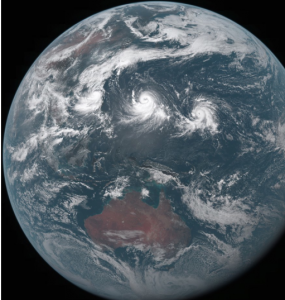We learned about the photoelectric effect this week. This video has a similar demonstration to the gold leaf electroscope experiment I showed you in class and includes an explanation of the process.
Click on the picture below to download the simulation we used to investigate the effect of irradiance on frequency on photocurrent. You’ll be prompted to install Java if you don’t have it already.
Once the animation is running, you can;
- change the metal under investigation (we used zinc in class)
- vary the wavelength of the incident light
- vary the irradiance of the incident light.
Notice that below the threshold frequency you can’t get any photoelectrons, even if you set the light to its brightest setting.
Compare your results to the graphs provided in your notes.
I have attached some notes & questions on the photoelectric effect. Click on the link below to download a copy.




